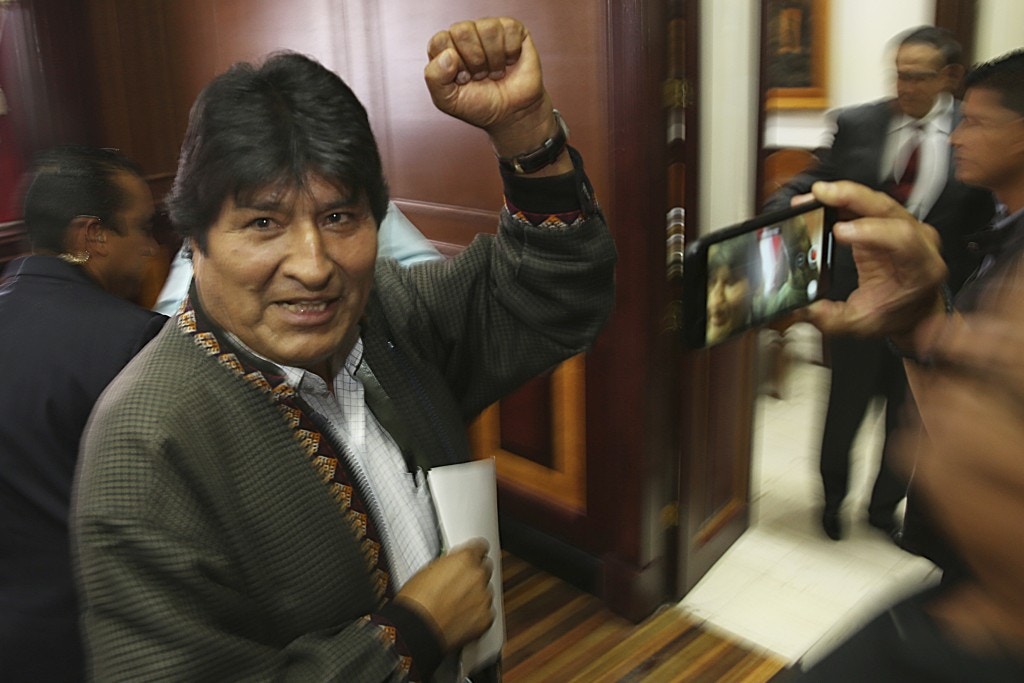by GLENN GREENWALD

AP
In November 2019, Bolivia’s three-term left-wing president, Evo Morales, was forced by the country’s military and police forces to flee to Mexico after Morales, the prior month, had been officially certified as the winner of his fourth consecutive presidential election. It was unsurprising that Morales won. As the Associated Press noted in 2014, his governance was successful by almost every key metric, and he was thus “widely popular at home for a pragmatic economic stewardship that spread Bolivia’s natural gas and mineral wealth among the masses.”
While Morales’s popularity had marginally waned since his 2014 landslide victory, he was still the most popular politician in the country. On the night of the October 21, 2019, vote, Bolivia’s election board certified that Morales’s margin of victory against the second-place candidate exceeded the ten percent threshold required under Bolivian law to avoid a runoff, thus earning him a fourth term. But allegations of election fraud were quickly voiced by Morales’s right-wing opponents, leading to his expulsion from the country on November 11.
Once he fled, Bolivia’s first-ever president from the country’s Indigenous population was replaced by a little-known, white, far-right senator, Jeanine Áñez, from the country’s minority European-descendent, Christian, wealthy region. Her new, unelected government promptly massacred dozens of Indigenous protesters and then vested the responsible soldiers with immunity. Seven months later, Áñez predictably continues to rule Bolivia as “interim president” despite never having run for president, let alone having been democratically elected.
The central tool used by both the Bolivian right and their U.S. government allies to justify the invalidation of Morales’s 10-point election victory were two election audits by the regional group Organization of American States — one a preliminary report issued on November 10, the day before Morales was forced from the country, and then its final report issued the next month — which asserted widespread, deliberate election fraud.
“Given all the irregularities observed, it is impossible to guarantee the integrity of the data and certify the accuracy of the results,” the OAS announced on November 10 as the country was in turmoil over the election. The next day, Morales, under the threat of force to him and his family, boarded a plane to Mexico, where he was granted asylum. The final OAS report in December claimed that “the audit team has detected willful manipulation” of the results based on “incontrovertible evidence of an electoral process marred by grave irregularities.”
But on Sunday, the New York Times published an article strongly suggesting that it was the OAS audit, not the Bolivian election, that was “marred by grave irregularities,” making it “impossible to guarantee the integrity of the data and certify the accuracy of the” OAS claims. The paper of record summarized its reporting this way: “A close look at Bolivian election data suggests an initial analysis by the OAS that raised questions of vote-rigging — and helped force out a president — was flawed.”
The Intercept for more